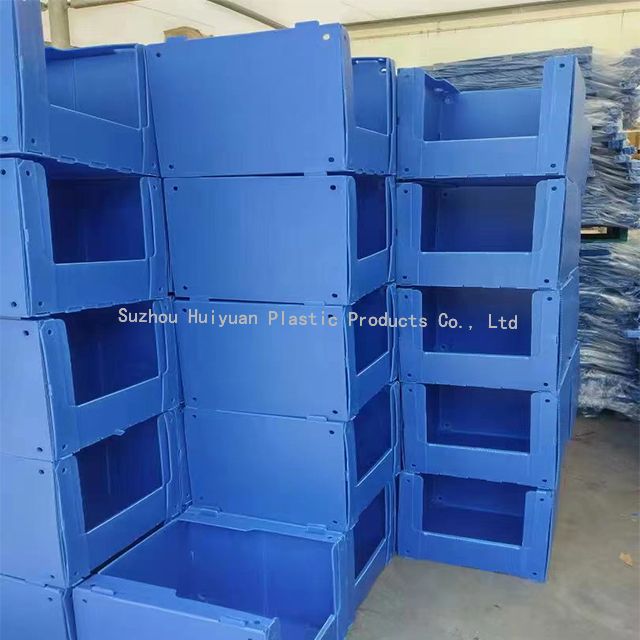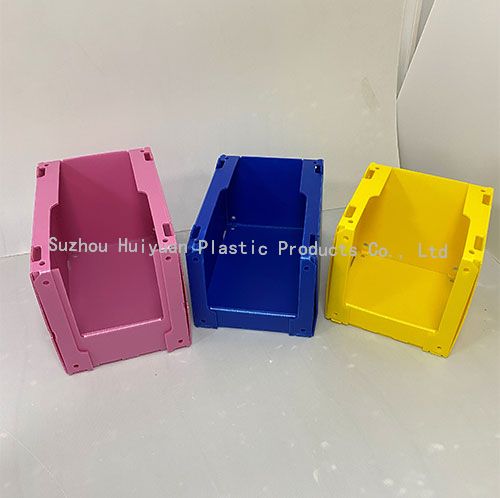©Copyright 2019 Suzhou Huiyuan Plastic Products Co., Ltd All rights reserved. Terms and Conditions Designed by iwonder.cnSite Map
In today’s competitive packaging industry, businesses seek materials that are cost-effective, durable, versatile, and eco-friendly. Among many options, PP packaging boxes have gained attention for their performance and adaptability. But how do they compare to boxes made from cardboard, PET, PVC, or biodegradable materials? This article explores the differences and explains why polypropylene (PP) packaging is a preferred choice for many industries.

PP packaging boxes are containers made from polypropylene, a thermoplastic polymer widely recognized for its toughness, chemical resistance, and lightweight properties. Unlike traditional cardboard or paper boxes, PP boxes offer higher durability and can withstand harsh conditions such as moisture, chemicals, and temperature fluctuations. These boxes are commonly used in food storage, pharmaceuticals, cosmetics, electronics, and industrial packaging due to their versatility and reliability.
PP boxes can be produced in various forms, including rigid containers, foldable boxes, and even transparent designs for retail display purposes. They are recyclable, which adds an environmental advantage over non-recyclable plastics.
Before comparing PP packaging boxes with other materials, it is essential to understand the alternatives. Some of the most common packaging boxes in the market include:
Cardboard Boxes: Made from paper pulp, cardboard boxes are lightweight, biodegradable, and easy to print on. They are commonly used in e-commerce, shipping, and general storage.
PET Boxes: Polyethylene terephthalate (PET) boxes are transparent, strong, and often used for food packaging and retail displays. They provide excellent clarity and protect against moisture and dust.
PVC Boxes: Polyvinyl chloride (PVC) boxes are rigid, durable, and suitable for packaging electronic products or cosmetics. However, they are less environmentally friendly compared to PP.
Biodegradable Boxes: These boxes are made from plant-based materials or recycled fibers and are designed to decompose naturally. While eco-friendly, they may lack the durability required for heavy or moisture-sensitive products.
Each of these materials has its advantages and drawbacks, depending on the application, cost, and environmental considerations.
One of the most significant differences between PP packaging boxes and other materials is their strength. PP boxes are highly resistant to impact, bending, and deformation. Unlike cardboard boxes, which can easily weaken under moisture or heavy loads, PP boxes retain their shape and protect the contents effectively. PET and PVC boxes offer strength as well, but PP’s chemical resistance and heat tolerance give it an edge in industrial and long-term storage applications.
PP packaging boxes excel in environments where moisture or chemical exposure is a concern. They are impervious to water, oils, and many common chemicals, making them ideal for packaging food, medical supplies, or industrial products. In contrast, cardboard boxes absorb moisture, leading to weakening or mold growth. PET and PVC boxes can resist water, but PP remains more flexible and less prone to cracking under stress.
Compared to traditional cardboard and PVC boxes, PP packaging is extremely lightweight without compromising strength. This feature makes PP box packaging cost-effective for shipping and logistics, as lighter packages reduce transportation costs. Cardboard boxes are light but may require additional reinforcement for heavier items, while PVC boxes, though durable, can add unnecessary weight.
PP packaging boxes offer excellent design versatility. They can be molded into rigid boxes, clamshell designs, foldable containers, and stackable storage units. Additionally, PP can be produced in various colors, transparency levels, and finishes. Other packaging materials, such as cardboard, may be limited in design flexibility, while PET boxes are usually transparent and less customizable in shape.
Recycling and sustainability are increasingly important in packaging decisions. PP packaging boxes are recyclable and can be reused multiple times, reducing overall waste. Cardboard is biodegradable, which is environmentally friendly, but may not be suitable for repeated use. PVC, while durable, poses environmental challenges due to difficult recycling processes. Biodegradable boxes are excellent for single-use applications but may not offer long-term protection.
Cost is always a critical factor in packaging decisions. Generally, PP packaging boxes are slightly more expensive than cardboard boxes but more affordable than PET or high-quality PVC boxes. Considering their durability, reusability, and moisture resistance, PP boxes offer excellent long-term value. Businesses that prioritize product protection, brand presentation, and shipping efficiency often find PP box packaging to be a worthwhile investment.
Brand visibility is crucial for consumer-facing products. PP boxes can be printed using various techniques, including flexography, offset printing, and hot stamping. The smooth surface of PP allows for vibrant colors and high-quality graphics, making it suitable for premium products. Cardboard also allows printing but may require lamination or coating for a polished look. PET and PVC boxes can be printed, but their transparency sometimes limits design options.
PP packaging boxes withstand a wide temperature range, from freezing conditions to hot environments, without warping or cracking. This makes them ideal for food storage, medical supplies, and products that need sterilization. Cardboard boxes, on the other hand, are highly sensitive to temperature changes, and PVC can deform under heat, limiting its usability in certain applications.
Food and Beverage: PP boxes are ideal for packing snacks, frozen food, and beverages due to moisture resistance and safety compliance. They prevent leakage and maintain freshness longer than cardboard.
Pharmaceuticals and Healthcare: Chemical resistance and sterility make PP boxes suitable for medicines, medical instruments, and diagnostic kits.
Electronics: Lightweight yet durable, PP boxes protect delicate electronic components during transport and storage.
Cosmetics and Personal Care: Their smooth surface allows elegant printing and clear visibility for premium cosmetic packaging.
Industrial Packaging: Chemicals, hardware, and tools benefit from PP boxes’ robustness and long shelf life.

The choice between PP packaging boxes and other packaging boxes ultimately depends on your product’s requirements, budget, and environmental considerations. PP boxes stand out for their durability, moisture resistance, lightweight nature, and design versatility. They are particularly suitable for industries that require reliable protection and repeated use, such as food, pharmaceuticals, electronics, and cosmetics.
Other packaging boxes, like cardboard, PET, PVC, or biodegradable materials, may offer advantages in cost, eco-friendliness, or transparency. However, when balancing strength, longevity, and versatility, PP box packaging often emerges as the superior choice.
For businesses aiming to enhance product protection, shipping efficiency, and brand presentation, investing in high-quality PP packaging boxes can offer both practical and marketing benefits. By understanding the differences and advantages of PP packaging, you can make informed decisions that optimize your packaging strategy and improve customer satisfaction.
By continuing to use the site you agree to our privacy policy Terms and Conditions.